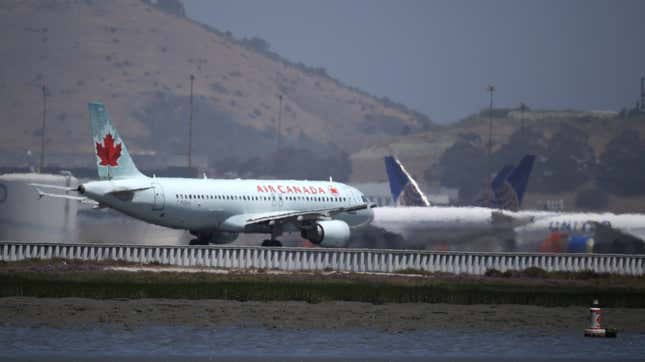
A little over a year ago, I drove across the Canadian border to visit my husband in the thick of the COVID-19 pandemic — and as I embarked on a journey back to Canada last week, I couldn’t help but realize that travel has only grown all the more complex.
Back in August of 2020, people still weren’t really traveling internationally, so there weren’t any established guidelines as to how to do it. So, I took a COVID-19 test about a week before I left Texas, at which point I drove up to my apartment in Philadelphia, where I spent a few days before heading to cross the border. That single COVID-19 test from weeks before, along with a valid marriage certificate to prove that I had a spousal reason to be in Canada, was all I needed. The kind folks at the border checked my temperature and called my husband and his family to verify that I was coming. They asked me about my quarantine plan — which was then a mandatory two weeks — and, satisfied with my answers, sent me on my way with the caveat that I not stop anywhere in Canada along the way.
When I flew back to Texas in February of 2021, things were different, but not by much. I needed a COVID test within 72 hours of travel in order to so much as enter the airport, and there were a few verified testing sites that provided test results specifically for travel. It was a simple enough process.
Now, to visit my husband, I have to be fully vaccinated, and I need to have taken a molecular (not antigen) COVID test within 72 hours of travel. You have to provide that information to an app called VeriFly. You have to provide that information to an app called ArriveCan. You need an ArriveCan completion code to finish the VeriFly process. All of your documents are scanned in the app to determine if they’re legitimate. Then, when you get to the airport, you have to provide those documents to folks at the check-in desk in order to get your boarding pass. You have to provide those documents again before boarding your flight. When I arrived in Canada, I had to provide all of those documents again to border control, along with answering the usual slew of questions about what I’m doing in Canada.
Even being approved for one step of the process doesn’t guarantee that you’ll make it to your final destination. I had my documents approved by both the ArriveCan and VeriFly apps, only to have the check-in agent question the validity of my COVID test because it was an NAA, not PCR, test — both of which are verified, but the PCR is infinitely more popular. I held my breath as I boarded my flight to Dallas, then my flight to Toronto. At the border crossing in the airport in Toronto, the border control officer also questioned my COVID test, having to make a call to verify that it would be accepted. There was a brief moment where I fully expected they would tell me to turn around and go back to America. And then, after I’d arrived, I had to take an in-airport COVID test just to make sure that I’m not contagious.
When I went to England, I flashed my documents at the check-in desk and at the boarding gate, and that was it. No one asked to see them on arrival. The UK, along with many other international destinations, is also a lot more lax when it comes to COVID tests. I would have been fine taking a rapid at-home antigen test.
This isn’t to pass judgement on Canada. I get it — I’d probably look at the disaster down in America and want to keep them at arm’s distance, too. I was just surprised at the sheer difficulty of crossing a more local border after the relative ease that was traveling to a whole other continent.